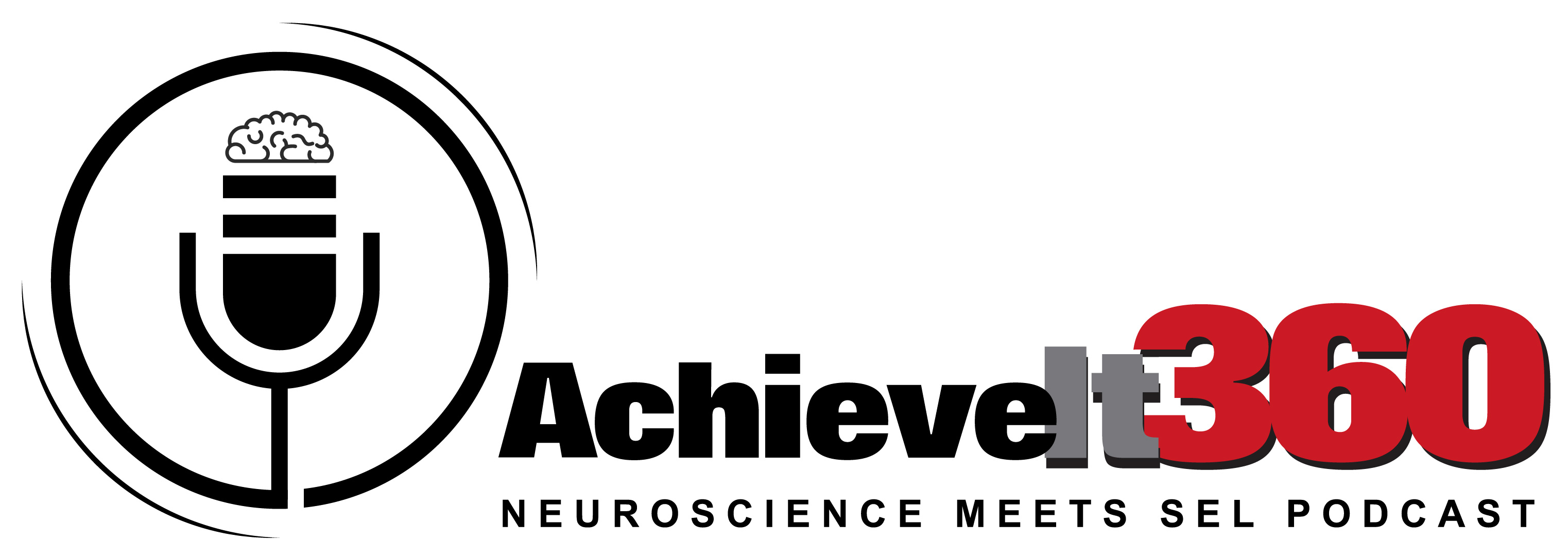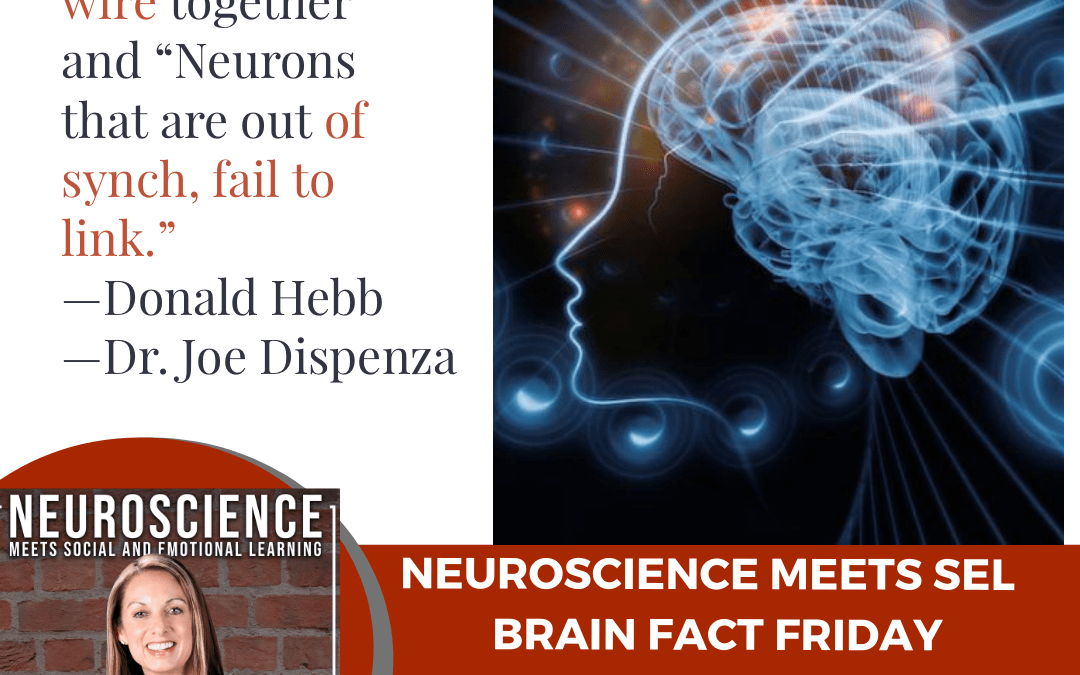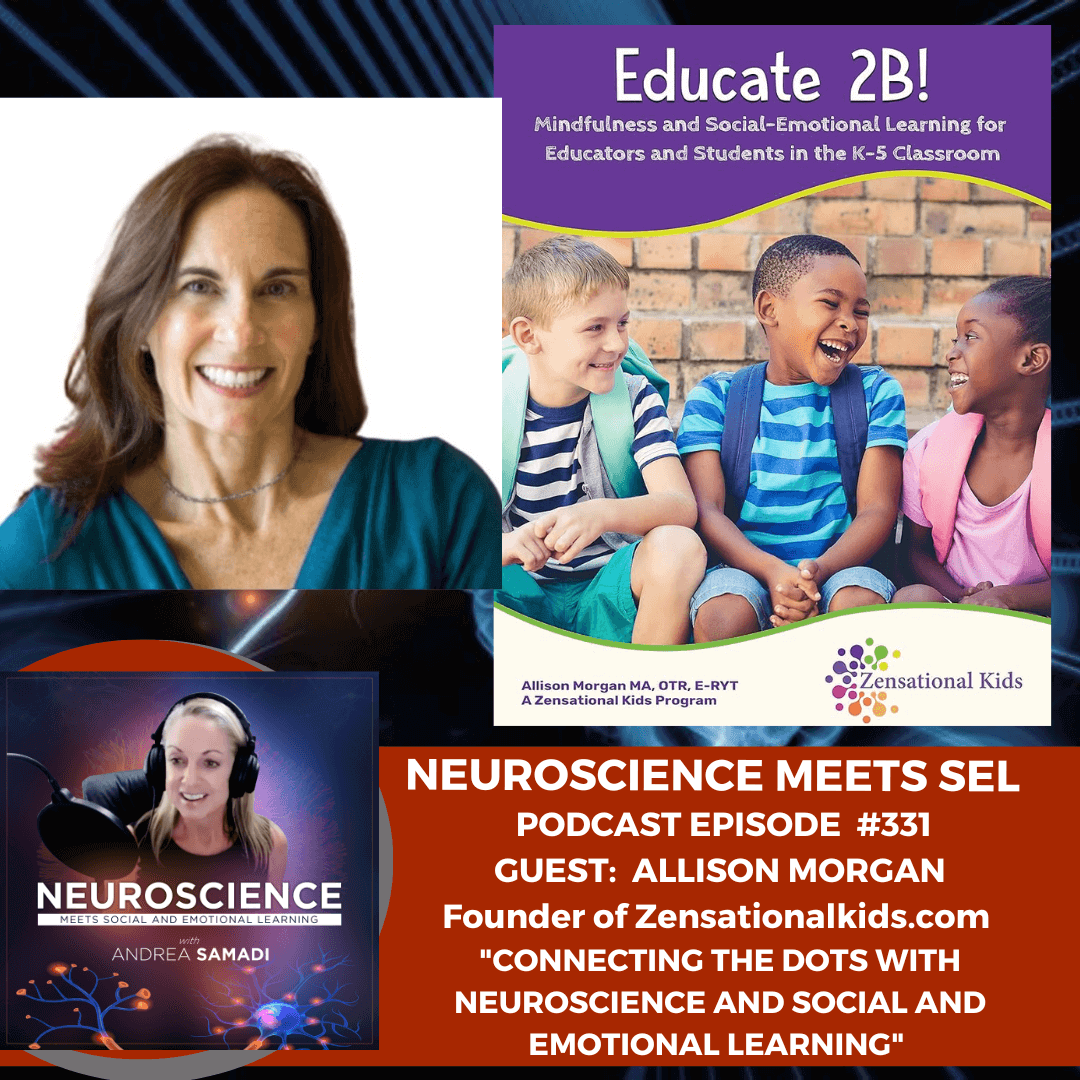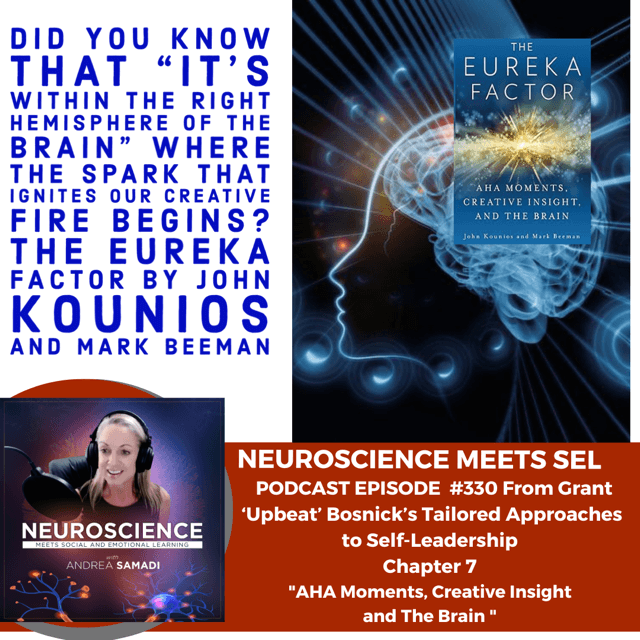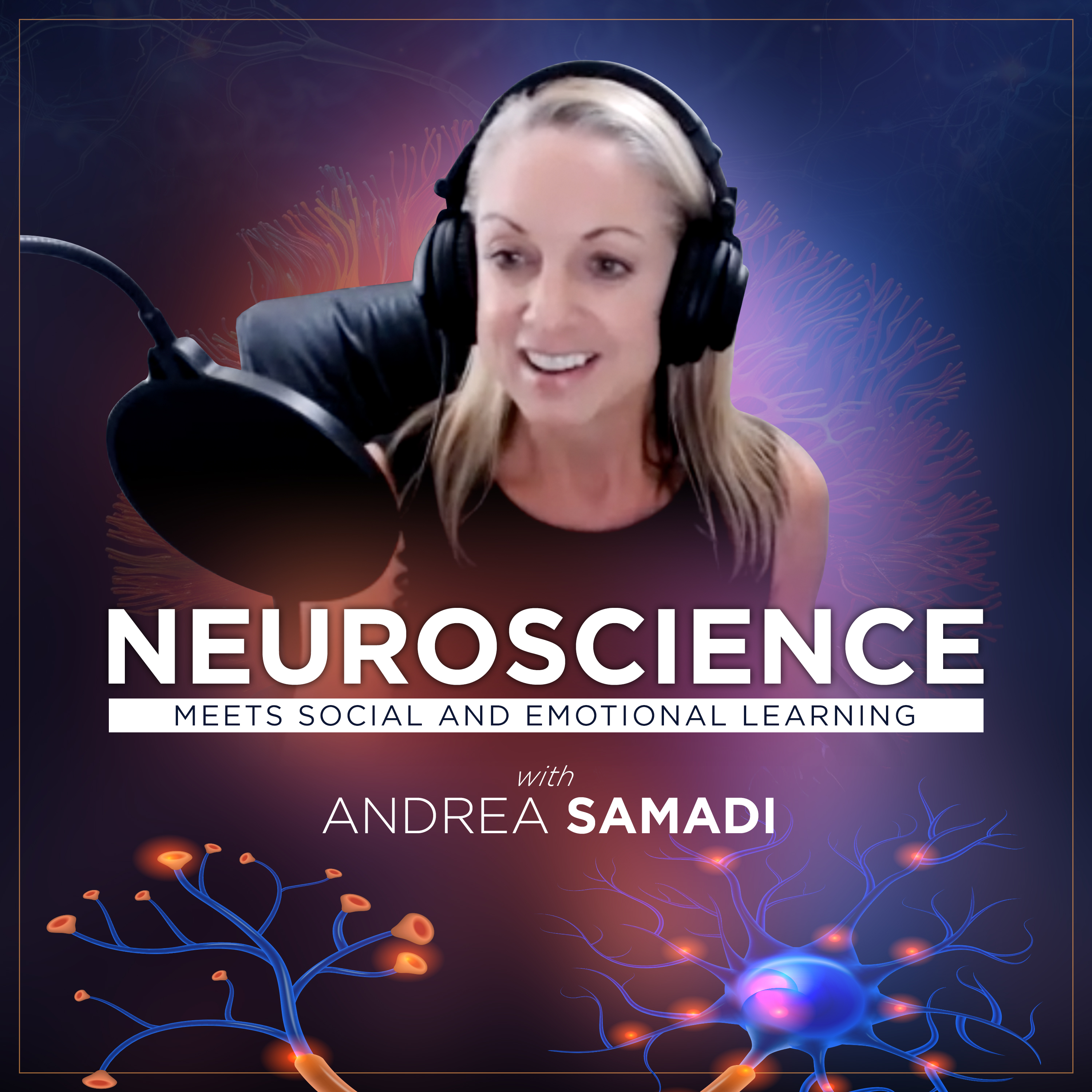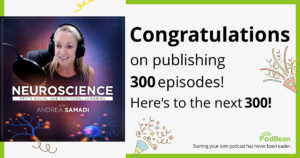Welcome back to the Neuroscience Meets Social and Emotional Learning Podcast, for Brain Fact Friday and episode #133 on Neuroplasticity, or “the ability for our brain to re-wire, grow, adapt or change throughout a person’s lifetime”[i]
Welcome back, I’m Andrea Samadi, a former educator who has been fascinated with understanding the science behind high performance strategies in schools, sports, and the workplace for the past 20 years. If you have been listening to our podcast, you will know that we’ve uncovered that if we want to improve our social and emotional skills, and experience success in our work and personal lives, it all begins with an understanding of our brain.
I remember the first time I heard the term “neuroplasticity.” It was in 2014 when I first began learning about the brain and learning, and a teacher in a workshop I was running asked me if I knew what it was, and I remember having an idea about what I thought it was but wouldn’t have been able to explain it without this specific YouTube video[ii] showing how pathways of the brain are strengthened with use and weakened when they are not used, or the “use it, or lose it” idea. I put this video in the show notes, but if you have been learning about the brain for some time, I’m sure you’ve already seen this video, as it’s been around for almost 10 years now and I have to say I’m so grateful for content like this that has helped me to learn the basics of neuroscience that I will continue to share with you, and help you to make connections whether you are using this information in the classroom or workplace.
I love hearing new ways the podcast is helping people, most recently from Dorothee Oung, from Madrid, Spain, who let me know she has been guiding coaches to the podcast who are learning the basics of neuroscience to help their clients. I always appreciate knowing how these ideas are being used, and that the content is helpful. Thanks for the note Dorothee. Please do send me a message via social media[iii], as I love hearing where you are listening to this podcast, and how you are using this information.
Remember: Knowledge isn’t power, until it’s applied. (Dale Carnegie)
Back to this episode.
In Today’s Brain Fact Friday You Will Learn:
✔︎ What is neuroplasticity and how this concept works in the brain when learning a new skill, thinking a certain way, or feeling a certain emotion.
✔︎ How neuroplasticity helps us to create new habits, and how we can use it to break habits we don’t want to keep.
✔︎ The controversy behind this topic, and how two of the people we have interviewed ignored the naysayers, and built a powerful career with the foundations of neuroplasticity.
Which brings us to this week’s Brain Fact Friday:
Did you know that “Neurons that fire together, wire together”[iv] and “neurons that are out of synch, fail to link.”[v]
I remember writing an article on LinkedIn a few years ago, explaining how we can use this idea which involves the concept that every time we learn a new skill, think a certain way, or feel a certain emotion, we strengthen the connections in our brain for whatever it is that we are reinforcing or repeating, or weaken the connection with less use. Since learning creates a synaptic connection when you are thinking, feeling or doing something new, and with repeated practice, we create a neural pathway in our brain that becomes stronger the more we repeat it, it would make sense that if we want to stop doing something, or break a habit, that we just need to avoid certain thoughts, feelings and actions, making the impulses, or neural connections weaker and weaker.
Stefanie Faye spoke about this concept on EPISODE #39[vi], taking it one step deeper, explaining that the brain creates high priority pathways with skills we are practicing and then eliminates low priority pathways with skills we ignore. She shares how the brain re-wires itself using myelin (a mixture of protein and fatty substances that form an insulating sheath around the nerve fiber, increasing the speed and efficiency of electrical impulses along the nerve cells) and explaining why patterned repetition is so important for the skills we want to improve, develop, and keep.
The Controversy Behind Neuroplasticity
What I think is crazy, is that two of the people I have interviewed, have spoken about the fact that they became interested in this concept of neuroplasticity, at a time that it was not yet accepted.
Dr. Caroline Leaf, on a bonus episode we released February, 2021[vii] mentioned she wanted to dedicate her studies to the fact that “if we can direct our mind, we can direct or change our brain” and two of her professors told her this was a ridiculous idea. She went on to build her career around this idea, has worked with thousands of people all over the world for the past 38 years, teaching people how to cultivate the power of their own thinking and direct their own brain changes.
During our last interview with Barbara Arrowsmith-Young[viii] she mentioned to me prior to our interview that the early days of her program caused quite a lot of controversy, and people even picketed outside her presentation because the concepts she was teaching were not understood or accepted. I have to say, honestly, that if I was picketed during my first presentation on the brain, (it was difficult enough creating a presentation on something new let alone have any criticism about it) I’m not sure I would have continued with this work. To me, you can see the belief that was behind Dr. Leaf’s work for her to push forward and make such an impact, and then Barbara knew that she changed her own brain with the results in her life being so obvious, that this belief is all that both women would need to move forward, leaps and bounds with these ideas.
So how can we use this concept of Neuroplasticity in our schools or workplaces? I learned about the AGES Model[ix] that is a good way for us to remember how we can continue to grow our brain and strengthen the neural pathways we want to keep.
LEARNING WITH THE BRAIN IN MIND: THE AGES MODEL
A: Attention: This was John Medina’s Brain Rule #4. “We don’t pay attention to boring things.”
I’m sure you have heard that “audiences check out after 10 minutes” (Summary 4, Brain Rules, Page 94) or that the brain can only focus on one thing at a time, making multitasking a bad idea. The funny thing is that although you may have heard of the fact that the “average person’s attention span is shorter than that of a goldfish, there’s no evidence that human attention is shrinking or that goldfishes have particularly short attention spans either.”[x] So how do we hold our student’s attention in the classroom, or during a presentation we might be doing in the workplace? The next 2 letters hold this secret.
G: Generation or Gender to make meaningful connections to prior learning. I think it’s important to make connections based on age, and experience, but I would change this one to gender, using John Medina’s Brain Rule #4 that “male and female brains are different.”[xi] Did you know that men’s and women’s brains are “different structurally and biochemically—men have bigger amygdala and produce serotonin faster and women and men respond differently to stress.” (Summary 11, Brain Rules, Page 260). Women remember emotional details easier not because they are more emotional, but because “they perceive their emotional landscape with more data points (or detail) and see it in greater resolution.”[xii]
E: Emotion and EPISODE #127[xiii] went deep into this area. We do know that when audiences (or our students) are checking out after 10 minutes, we can grab their attention back by “telling narratives or creating events rich in emotion.” Emotions help memories form and stick so if you want to make your next presentation or lesson memorable, the best way is to somehow connect with your audience or class with a story that they connect to on an emotional level. This activates the mirror neurons in your audience, and they will listen, connect with you and trust you on a deeper level.
S: Spaced Repetition: We heard from Dr. John Dunlosky, a Professor of Psychology at Kent State University, who has contributed empirical and theoretical work on memory and metacognition, including theories of self-regulated learning and metacomprehension. With years of research on which learning strategies yielded the most results for learning new information, it was not using a yellow highlighter in class, (I still always use mine though) but it was spaced repetition of new learning that took the new skill from short term memory to long-term.
If we think about how neuroplasticity works, it makes sense that we use whatever method we can to keep what we are learning interesting for learners to actually listen to you, connecting to different generations and genders, adding emotion and repeating the new learning to strengthen the neural pathway and be sure that it’s reinforced with myelin that will make this information pass through the pathway quickly and efficiently.
Neuroplasticity to me is to the secret to learning something new, with the knowledge that this new learning will forever change my brain: both its structure and function. Both Dr. Leaf and Barbara Arrowsmith-Young would agree with this.
See you next week, for episode #134 with an incredible woman, Kristen Holmes, the VP of Performance Science at WHOOP.com as we debrief my first month using this device that measures sleep, strain and recovery, and was listed at #1 in Wellness with Fast Company’s 2020 Most Innovative Companies. The results and deep dive into my data of this device that’s used by many pro athletes like Patrick Mahomes, will blow you away.
Have a good weekend.
REFERENCES:
[i] Neuroplasticity Published on YouTube August 13, 2018 https://www.youtube.com/watch?v=dmEOJyWVQj4
[ii] Neuroplasticity Published on YouTube November 6, 2012 https://www.youtube.com/watch?v=ELpfYCZa87g
[iii] https://www.achieveit360.com/contact-us/
[iv] Donald Hebb, a Canadian neuropsychologist coined this term in 1949.
[v] Neurons That Fire Together, Wire Together: Using Your Brain to Break Bad Habits, Published on LinkedIn May 27, 2017 https://www.linkedin.com/pulse/neurons-fire-together-wire-so-simple-andrea-samadi/
[vi] Neuroscience Meets Social and Emotional Learning Podcast EPISODE #39 with Stefanie Faye on “using Neuroscience to Improve Our Mindset, Self-Regulation and Self Awareness: https://andreasamadi.podbean.com/e/neuroscience-researcher-stefanie-faye-on-using-neuroscience-to-improve-our-mindset-self-regulation-and-self-awareness/
[vii] Neuroscience Meets Social and Emotional Learning Podcast BONUS EPISODE with Dr. Caroline Leaf on “Cleaning Up Your Mental Mess” https://andreasamadi.podbean.com/e/worldrenownedneuroscientistdr-caroline-leaf-oncleaningup-your-mentalmess5-simplescientifically-proven-stepsto-reduceanxiety-and-toxic-thinking/
[viii] Neuroscience Meets Social and Emotional Learning Podcast EPISODE #132 with Barbara Arrowsmith-Young on “The Woman Who Changed Her Brain” https://andreasamadi.podbean.com/e/the-story-of-barbara-arrowsmith-young-the-woman-who-changed-her-brain-and-left-her-learning-disability-behind/
[ix] Neuroplasticity and Learning Explained: The AGES Model Published on YouTube Feb.14, 2018 https://www.youtube.com/watch?v=88OL8NdkV-s
[x] 72 Amazing Brain Facts #32 by Deane Alban https://bebrainfit.com/human-brain-facts/
[xi] John Medina Brain Rule #11 https://vimeo.com/52295224
[xii] John Medina’s Brain Rules Page 274 https://www.amazon.com/dp/B005Z6YGRC/ref=dp-kindle-redirect?_encoding=UTF8&btkr=1
[xiii] Neuroscience Meets Social and Emotional Learning Podcast EPISODE #127 “How Emotions Impact Learning and the Brain” https://andreasamadi.podbean.com/e/brain-fact-friday-how-emotions-impact-learning-memory-and-the-brain/
Podcast: Play in new window | Download
Subscribe: Apple Podcasts | RSS
